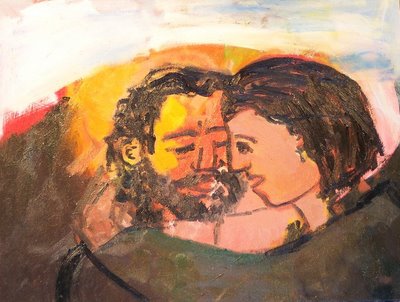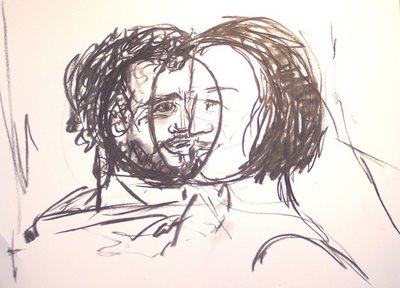
Here is another self-portrait, this time a painting and a drawing with my husband. The painting came first. It owes something to Charlotte Salomon (see links). The painting has the figures fused with a mountainous landscape while the drawing gives little reference for place.
In the drawing, I imposed the interlocking rings I have been using in other paintings over our heads, here reminders of wedding rings and marriage. Our son has been studying venn diagrams at school and I noticed that my image is one of sorts. "A venn diagram is a diagram used to divide up two or more objects to view similarities and differences. " - http://en.wikipedia.org/wiki/Venn_diagram It is unlike Picasso's Girl Before a Mirror at the MOMA (a painting with lots of rings) in that there are two figures here and they retain their separate identities. http://blog.chosun.com/web_file/blog/438/5938/1/picasso-Girl-Before-a-Mirror_small.jpg While there isn't a mirror in the picture, the mutual gaze relates to the psychological idea of "mirroring."
In the drawing, we do not seem to be gazing exactly into each other's eyes. I think Christoph is looking a bit outward while I seem to look a bit inward. Perhaps we don't always see eye-to-eye, but we have enough common ground to make a solid unit and to complement one another.


